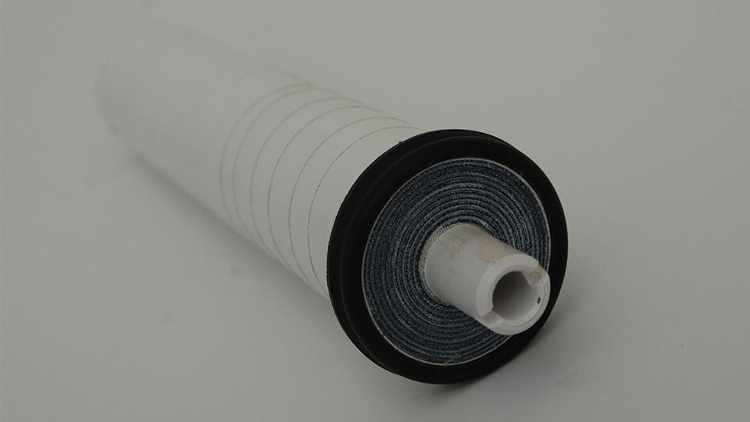The Challenge
Nearly 60% of Los Angeles County’s water demand is fulfilled by imported water from hundreds of miles away. Securing a sustainable local water supply via recycled wastewater can help save the enormous amounts of energy required to transport water and make the region more resilient to climatic change. Over the years, the use of bioreactors (a type of membrane filtration) combined with wastewater treatment has significantly contributed to ensuring local water supplies.
However, it has also raised concern for biofouling, which is a phenomenon that occurs when microorganisms in the wastewater adhere to the surface of the membranes and restrict water flow. Membrane surfaces must be cleaned periodically by discontinuing the bioreactor operation, which limits the economic advantages of using this approach. Thus, for the use of bioreactors in wastewater treatment to become widely adopted as a fully sustainable and economical technology across Los Angeles County – the membrane biofouling issue must first be resolved.
The Solution
In this project, researchers applied their novel antifouling technology in a real-world wastewater treatment plant. The research team previously developed a scalable coating technology that modifies membrane materials to resist biofouling using perfluorphenyl azide (PFPA) derivatives.
They first synthesized several different PFPA derivatives to apply to the surface of the membranes and analyzed for successful coating, changes in permeability, and rejection rates to a representative foulant (bovine serum albumin or BSA). In a lab-built bioreactor unit, the modified membranes were tested with activated sludge from municipal wastewater treatment and monitored to observe the fouling rate and foulant composition. Ultimately, these antifouling membranes will enable bioreactors to operate longer in between cleanings, produce more freshwater, and use less energy than traditional membranes.
Results
- A library of novel PFPA derivatives was synthesized that can be used to prevent fouling without harming the microorganisms in the bioreactors.
- The modified membranes exhibit extraordinarily low foulant adhesion due to the formation of a few-nanometer-thick hydration layer, which prevents foulants from adhering directly onto membrane surfaces. As a result, the modified membranes have higher pure water permeability relative to the unmodified membranes.
Next Steps
The antifouling membranes are ready to scale up and make an immediate commercial impact across Los Angeles County, if a private company can scale up production and bring down costs.
Additional Outcomes to Date
The SLA GC funding has led to several other important projects (funding sources listed in brackets) for members of the research team, including:
- High Water Recovery Desalination of Non-Traditional Waters (CERC-WET)
- High Throughput Screening of Anti-fouling and Anti-bacterial Coating Films (NSF-SusChEM)
- Safe, Low Resistance Modified Membrane Separators for Energy Storage Applications (UCLA PSEIF Fellowship)
Additionally, more follow-on support was secured from NSF-INFEWS and UCLA-NSF Training Grant.
Publications and Reports
Jun, D., Kim, Y., Hafeznezami, S., Yoo, K., Hoek, E. M. V., & Kim, J. (2017). Biologically Induced Mineralization in Anaerobic Membrane Bioreactors: Assessment of Membrane Scaling Mechanisms in a Long-Term Pilot Study. Journal of Membrane Science, 543, 342-350. doi:10.1016/j.memsci.2017.08.025
Lin, C., Aguilar, S., Rao, E., Mak, W. H., Huang, X., He, N., . . . Kaner, R. B. (2019). Direct Grafting of Tetraaniline Via Perfluorophenylazide Photochemistry to Create Antifouling, Low Bio-Adhesion Surfaces. Chemical Science, 10(16), 4445-4457. doi:10.1039/c8sc04832k
Lin, C., Mak, W. H., Mcverry, B. T., & Kaner, R. B. (2019). Separation Techniques Using Conjugated Polymers. Conjugated Polymers, 629-677. doi:10.1201/9780429190520-21
McVerry, B., Anderson, M., He, N., Kweon, H., Ji, C., Xue, S., . . . Kaner, R. B. (2019). Next-Generation Asymmetric Membranes Using Thin-Film Liftoff. Nano Letters, 19(8), 5036-5043. doi:10.1021/acs.nanolett.9b01289
Rao, E., McVerry, B., Borenstein, A., Anderson, M., Jordan, R. S., & Kaner, R. B. (2018). Roll-to-Roll Functionalization of Polyolefin Separators for High-Performance Lithium-Ion Batteries. ACS Applied Energy Materials, 1(7), 3292-3300. doi:10.1021/acsaem.8b00502

Research Team
Richard Kaner
Chemistry & Biochemistry, Physical Sciences
rbk@chem.ucla.edu
Eric Hoek
Civil & Environmental Engineering, Samueli School of Engineering & Applied Sciences
UCLA Sustainable LA Grand Challenge
emvhoek@ucla.edu
Shaily Mahendra
Civil & Environmental Engineering, Samueli School of Engineering & Applied Sciences
mahendra@seas.ucla.edu




